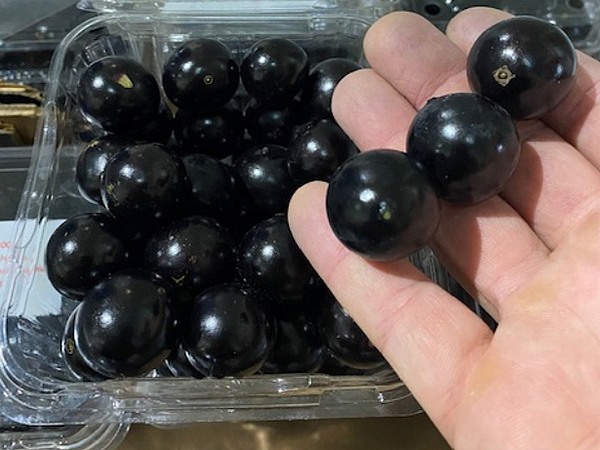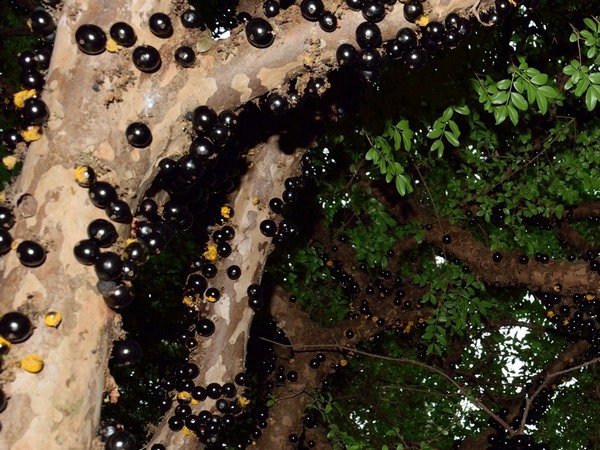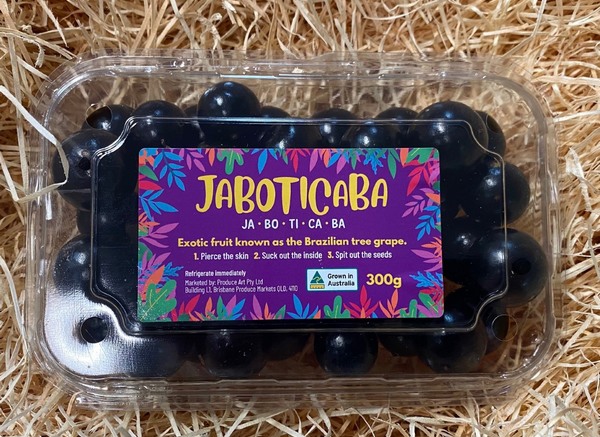An Australian fresh produce trading company expects the rise in popularity of the exotic fruit Jaboticaba as it gets more marketing in coming years.
Produce Art, based in Brisbane, supplies the emerging tropical fruit and Director Rohan Bicknell has compared it to the feijoa, which itself has grown in sales in past seasons.
"I saw it being sold over the past 10 years in markets and there was never any marketing done - it was basically a homemade label and it was put in a punnet," Mr Bicknell said. "So, you'd walk past a store and it wouldn't grab your attention. So, I wanted to do it properly, and we developed a nice catchy label and put some good information on simple things like how to pronounce it, how to eat it and how to store it. We were pleased with the feedback; as soon as we put it online it received some great feedback. We can only see this line growing. It reminds me of feijoas really, where there wasn't a lot of information out there on how to grow them or store them post-harvest, or even eat them. That has changed for feijoas and I see the same thing happening with jaboticaba."

Photos source: Produce Art Instagram page
For those who have not tasted Jaboticaba, Mr Bicknell says it has unique characteristics. It usually contains 1-2 seeds which are bitter if bitten, and the fruit can also be used to make jellies, jams, juice or wine and is a great addition cut and squeezed into a sparkling drink.
"It has a sweet-tart flavour to it; the inside is very gelatinous and sweet and the outside, the skin is a little tart at the end," he said. "It brings in that port flavour when you consume it together. But a lot of people don't even eat the skin, instead, they will bite the skin and squeeze out the internal part, solely and spit out the seed."
It is grown on the East Coast of Australia, primarily in Queensland. Mr Bicknell explains that it is also known as Brazilian grapes, and the subtropical fruit grows on the trunk of the tree. He says that Jaboticaba trees take a lot of time to bear fruit, sometimes up to 10 years, but volumes can grow substantially after that.

"From my research, it was grown in large quantities a few decades ago, and there was a frenzy of growers doing it in the past," he said. "But I presume it got to a point where people were growing it too much and there wasn't a market to promote it properly - they didn't have the advantage of Facebook and Instagram back then, so it would have been a lot harder. The market then deteriorated heavily, and I have only really found a few orchards still going. Even then, they don't really know what to do with them, with some buying the property with the trees already on it. So, those who still have these trees have substantial volumes to look at selling commercially."

The Jaboticaba has an extremely short window; however, it can fruit four times a year. While Australia has only primarily had two crops, the biggest crop around November then a second flowering around February, Mr Bicknell noted that in Brazil where there is higher rainfall and water for the trees, there is more fruit throughout the year.
"We don't have massive volumes, but this year we had more volume than ever," he said. "We sent fruit to all markets on Australia's east coast and it sold within a day and we were asked for more. There are also different varieties of Jaboticaba which everyone knows, but just like other fruit types, such as apples, there are other colours and sizes too. No one has really thought about these and known they exist. The main variety in Australia is the Sabara, it is the black-skinned one, but there was another one that was popular due to its size, which was called Grimal. It was more red-purple coloured."
 For more information:
For more information:
Rohan Bicknell
Produce Art
Phone: +61 428 670 183
[email protected]
www.produceart.com.au










